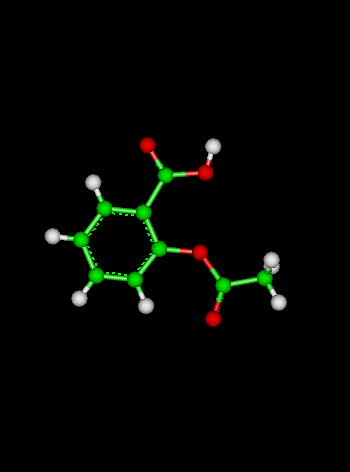
Course Chapters
Section Tests
Online Calculators Linear Least Squares Regression Newton's Method Equation Solver
Related Information Links
|
Numbers in ScienceWhen scientists measure a quantity, they actually measure two pieces of information--the value they think they have measured, and the uncertainty. This can be stated as "We measured ten, plus or minus one", and often scientists do use these terms. However, this notation gets cumbersome fast. We need a different strategy. Scientists put only the digits they can reasonably be certain of in their numbers. They might say, for example, that they measured "10." cm. This is actually different from saying that they measured "10" cm. The use of the decimal point indicates that the scientist is sure of both digits to some reasonable degree -- it is 10.something , not 11 or 9, even though rounding both of these numbers to one digit gives 10. The number "10." is said to have two significant digits, or significant figures, the 1 and the 0. The number 1.0 also has two significant digits. So does the number 130, but 10 and 100 only have one "sig fig" as written. Zeros that only hold places are not considered to be significant. So, how does a scientist indicate that two of the digits in 100 are significant? We can't put in a decimal point alone to make 100. because that would indicate 3 digits. What should we do? Scientists use scientific notation to handle this problem. Scientific notation makes sure that everything but the first digit of a number is after the decimal place and therefore either signigicant or not used. Here are some numbers in scientific notation to study:
See the differences? In the first and second example, the zeros are really only place holders. In the third example, the extraneous decimal place is used to mean we are certain of all three digits. In the fourth example the extra zeros (on the right!) are used to indicate that we have extra certainty. In the fifth example, we have finally seen how to represent 100 with exactly two sig figs.
Scientific Notation on Your CalculatorHere is one way to type these numbers into your calculator:
= 2.183 * 10 ^ 3 - 1.1 * 10 ^ -2 = 2182.989 When you are using your calculator, typing "something times ten to the something" over and over again gets to be a pain. Most calculators have an "EE" button, to help you out. EE means "times ten to the," so that:
= 2.183 EE 3 - 1.1 EE -2 = 2182.989 Note that when you type the EE key, most calculators simply print "E"! Do not be alarmed by this. This is not the E that means error. Be careful! It's easy to make the following common mistake: Remember that EE -- times ten to the -- is not the same as ^ -- "to the"!
Our next question needs to be, "What happens to the number of sig figs when we perform calculations?" When scientists are calculating with sig figs, the precision of the result should reflect the uncertainty of the numbers that went into it. If you add .25 to 100, given that 100 only has one sig fig and therefore we don't trust even the two zeros, can you really say you have 100.25? That would be saying that you were sure the first 100 was, in fact, 100.00! If the 100 had five sig figs, why didn't someone say so? Multiplication also has rules about this. What are the rules, exactly?
Adding and SubtractingWhen you are adding or subtracting with sig figs, look wherethe right-most sig fig is in each number. The number that has its right-most sig fig in the higher place governs what is significant in the result. Watch:
1.0750 + 32,110.31 = 32,111.3850
last sig fig: .000x .0x
use the .0x (highest place) = 32,111.39
Be careful when the numbers are in scientific notation:
What did we do??
Multiplying and DividingWhen you are multiplying or dividing, you look at how many sig figs are in each number. The lowest of these is the number of sig figs the result will have. This is easier and actually more common in chemistry:
Notice that the smallest number of sig figs is three so we put three in the result. Exponentiation (including square root) works like multiplication -- since it is based on multiplication.
Try It Out
[Numbers and their Properties] [Numbers in Science] [Ratios and Proportions] [Units, Dimensions, and Conversions] [Percents] [Simple Statistics] [Logarithms] |
 The Shodor Education Foundation, Inc.
The Shodor Education Foundation, Inc.in cooperation with the Department of Chemistry,
Appalachian State University
Copyright © 1998
Last Update:
Please direct questions and comments about this page to
WebMaster@shodor.org